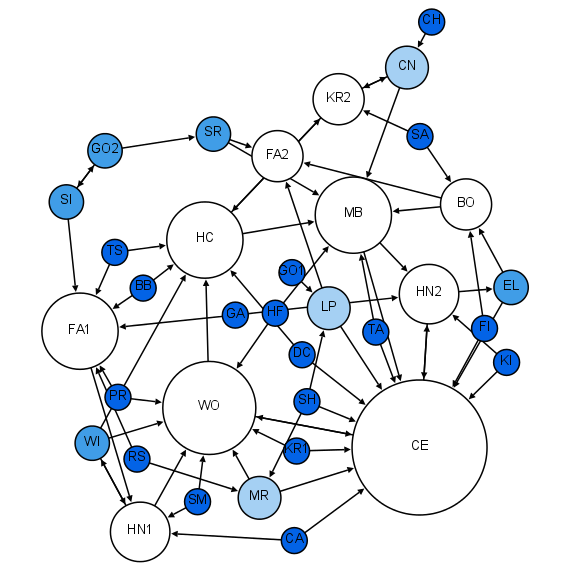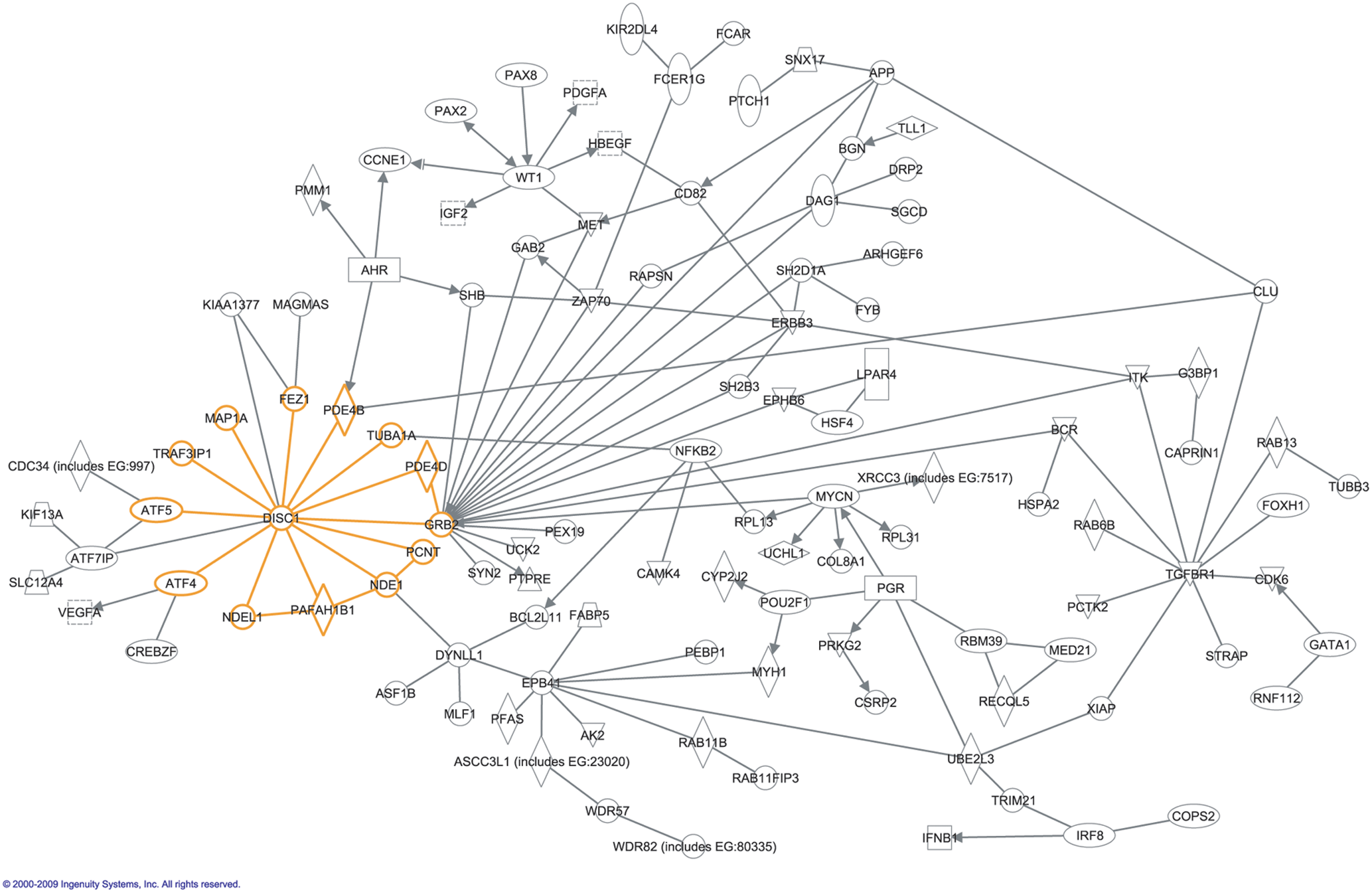|
Systems Pharmacology
Systems pharmacology is the application of systems biology principles to the field of pharmacology. It seeks to understand how drugs affect the human body as a single complex biological system. Instead of considering the effect of a drug to be the result of one specific drug-protein interaction, systems pharmacology considers the effect of a drug to be the outcome of the network of interactions a drug may have. In 1992, an article on systems medicine and pharmacology was published in China. Networks of interaction may include chemical-protein, protein–protein, genetic, signalling and physiological (at cellular, tissue, organ and whole body levels). Systems pharmacology uses bioinformatics and statistics techniques to integrate and interpret these networks. Systems pharmacology can be applied to drug safety studies as a complement to pharmacoepidemiology. See also * Quantitative Systems Pharmacology * Drug interaction In pharmaceutical sciences, drug interactions occur ... [...More Info...] [...Related Items...] OR: [Wikipedia] [Google] [Baidu] |
Systems Biology
Systems biology is the computational modeling, computational and mathematical analysis and modeling of complex biological systems. It is a biology-based interdisciplinary field of study that focuses on complex interactions within biological systems, using a holistic approach (holism instead of the more traditional reductionist, reductionism) to biological research. This multifaceted research domain necessitates the collaborative efforts of chemists, biologists, mathematicians, physicists, and engineers to decipher the biology of intricate living systems by merging various quantitative molecular measurements with carefully constructed mathematical models. It represents a comprehensive method for comprehending the complex relationships within biological systems. In contrast to conventional biological studies that typically center on isolated elements, systems biology seeks to combine different biological data to create models that illustrate and elucidate the dynamic interactions with ... [...More Info...] [...Related Items...] OR: [Wikipedia] [Google] [Baidu] |
Pharmacology
Pharmacology is the science of drugs and medications, including a substance's origin, composition, pharmacokinetics, pharmacodynamics, therapeutic use, and toxicology. More specifically, it is the study of the interactions that occur between a living organism and chemicals that affect normal or abnormal biochemical function. If substances have medicinal properties, they are considered pharmaceuticals. The field encompasses drug composition and properties, functions, sources, synthesis and drug design, molecular and cellular mechanisms, organ/systems mechanisms, signal transduction/cellular communication, molecular diagnostics, interactions, chemical biology, therapy, and medical applications and antipathogenic capabilities. The two main areas of pharmacology are pharmacodynamics and pharmacokinetics. Pharmacodynamics studies the effects of a drug on biological systems, and pharmacokinetics studies the effects of biological systems on a drug. In broad terms, pharmacod ... [...More Info...] [...Related Items...] OR: [Wikipedia] [Google] [Baidu] |
Drugs
A drug is any chemical substance other than a nutrient or an essential dietary ingredient, which, when administered to a living organism, produces a biological effect. Consumption of drugs can be via inhalation, injection, smoking, ingestion, absorption via a patch on the skin, suppository, or dissolution under the tongue. In pharmacology, a drug is a chemical substance, typically of known structure, which, when administered to a living organism, produces a biological effect. A pharmaceutical drug, also called a medication or medicine, is a chemical substance used to treat, cure, prevent, or diagnose a disease or to promote well-being. Traditionally drugs were obtained through extraction from medicinal plants, but more recently also by organic synthesis. Pharmaceutical drugs may be used for a limited duration, or on a regular basis for chronic disorders. Classification Pharmaceutical drugs are often classified into drug classes—groups of related drugs that hav ... [...More Info...] [...Related Items...] OR: [Wikipedia] [Google] [Baidu] |
Biological System
A biological system is a complex Biological network inference, network which connects several biologically relevant entities. Biological organization spans several scales and are determined based different structures depending on what the system is. Examples of biological systems at the macro scale are populations of organisms. On the organ (anatomy), organ and Tissue (biology), tissue scale in mammals and other animals, examples include the circulatory system, the respiratory system, and the nervous system. On the Micrometre, micro to the Nanometre, nanoscopic scale, examples of biological systems are cell (biology), cells, organelles, macromolecular complexes and Regulatory T cell, regulatory pathways. A biological system is not to be confused with a Living systems, living system, such as a living organism. Organ and tissue systems These specific systems are widely studied in human anatomy and are also present in many other animals. * Respiratory system: the organs used for b ... [...More Info...] [...Related Items...] OR: [Wikipedia] [Google] [Baidu] |
Network Science
Network science is an academic field which studies complex networks such as telecommunication networks, computer networks, biological networks, Cognitive network, cognitive and semantic networks, and social networks, considering distinct elements or actors represented by ''nodes'' (or ''vertices'') and the connections between the elements or actors as ''links'' (or ''edges''). The field draws on theories and methods including graph theory from mathematics, statistical mechanics from physics, data mining and information visualization from computer science, inferential statistics, inferential modeling from statistics, and social structure from sociology. The United States National Research Council defines network science as "the study of network representations of physical, biological, and social phenomena leading to predictive models of these phenomena." Background and history The study of networks has emerged in diverse disciplines as a means of analyzing complex relational ... [...More Info...] [...Related Items...] OR: [Wikipedia] [Google] [Baidu] |
Interaction Network
In molecular biology, an interactome is the whole set of molecular interactions in a particular cell. The term specifically refers to physical interactions among molecules (such as those among proteins, also known as protein–protein interactions, PPIs; or between small molecules and proteins) but can also describe sets of indirect interactions among genes ( genetic interactions). The word "interactome" was originally coined in 1999 by a group of French scientists headed by Bernard Jacq. Mathematically, interactomes are generally displayed as graphs. While interactomes may be described as biological networks, they should not be confused with other networks such as neural networks or food webs. Molecular interaction networks Molecular interactions can occur between molecules belonging to different biochemical families (proteins, nucleic acids, lipids, carbohydrates, etc.) and also within a given family. Whenever such molecules are connected by physical interactions, they form molec ... [...More Info...] [...Related Items...] OR: [Wikipedia] [Google] [Baidu] |
Protein–protein Interaction
Protein–protein interactions (PPIs) are physical contacts of high specificity established between two or more protein molecules as a result of biochemical events steered by interactions that include electrostatic forces, hydrogen bonding and the hydrophobic effect. Many are physical contacts with molecular associations between chains that occur in a cell or in a living organism in a specific biomolecular context. Proteins rarely act alone as their functions tend to be regulated. Many molecular processes within a cell are carried out by molecular machines that are built from numerous protein components organized by their PPIs. These physiological interactions make up the so-called Interactome, interactomics of the organism, while aberrant PPIs are the basis of multiple aggregation-related diseases, such as Creutzfeldt–Jakob disease, Creutzfeldt–Jakob and Alzheimer's diseases. PPIs have been studied with Methods to investigate protein–protein interactions, many methods and ... [...More Info...] [...Related Items...] OR: [Wikipedia] [Google] [Baidu] |
Cell Signaling
In biology, cell signaling (cell signalling in British English) is the Biological process, process by which a Cell (biology), cell interacts with itself, other cells, and the environment. Cell signaling is a fundamental property of all Cell (biology), cellular life in both prokaryotes and eukaryotes. Typically, the signaling process involves three components: the signal, the receptor, and the effector. In biology, signals are mostly chemical in nature, but can also be physical cues such as pressure, Membrane potential, voltage, temperature, or light. Chemical signals are molecules with the ability to bind and activate a specific Receptor (biochemistry), receptor. These molecules, also referred to as Ligand (biochemistry), ligands, are chemically diverse, including ions (e.g. Na+, K+, Ca2+, etc.), lipids (e.g. steroid, prostaglandin), peptides (e.g. insulin, ACTH), carbohydrates, glycosylated proteins (proteoglycans), nucleic acids, etc. Peptide and lipid ligands are particularly ... [...More Info...] [...Related Items...] OR: [Wikipedia] [Google] [Baidu] |
Bioinformatics
Bioinformatics () is an interdisciplinary field of science that develops methods and Bioinformatics software, software tools for understanding biological data, especially when the data sets are large and complex. Bioinformatics uses biology, chemistry, physics, computer science, data science, computer programming, information engineering, mathematics and statistics to analyze and interpret biological data. The process of analyzing and interpreting data can sometimes be referred to as computational biology, however this distinction between the two terms is often disputed. To some, the term ''computational biology'' refers to building and using models of biological systems. Computational, statistical, and computer programming techniques have been used for In silico, computer simulation analyses of biological queries. They include reused specific analysis "pipelines", particularly in the field of genomics, such as by the identification of genes and single nucleotide polymorphis ... [...More Info...] [...Related Items...] OR: [Wikipedia] [Google] [Baidu] |
Pharmacoepidemiology
Pharmacoepidemiology is the study of the uses and effects of drugs in well-defined populations. To accomplish this study, pharmacoepidemiology borrows from both pharmacology and epidemiology. Thus, pharmacoepidemiology is the bridge between both pharmacology and epidemiology. Pharmacology is the study of the effect of drugs and clinical pharmacology is the study of effect of drugs on clinical humans. Part of the task of clinical pharmacology is to provide a risk benefit assessment by effects of drugs in patients: * doing the studies needed to provide an estimate of the probability of beneficial effects on populations, * or assessing the probability of adverse effects on populations. Other parameters relating to drug use may benefit epidemiological methodology. Pharmacoepidemiology then can also be defined as the transparent application of epidemiological methods through pharmacological treatment of conditions to better understand the conditions to be treated. Epidemiology is the ... [...More Info...] [...Related Items...] OR: [Wikipedia] [Google] [Baidu] |





